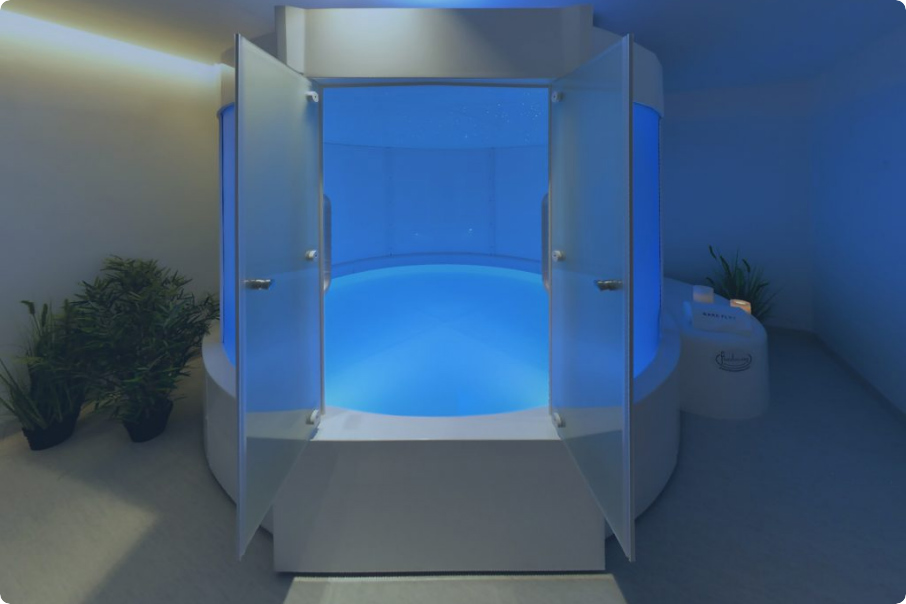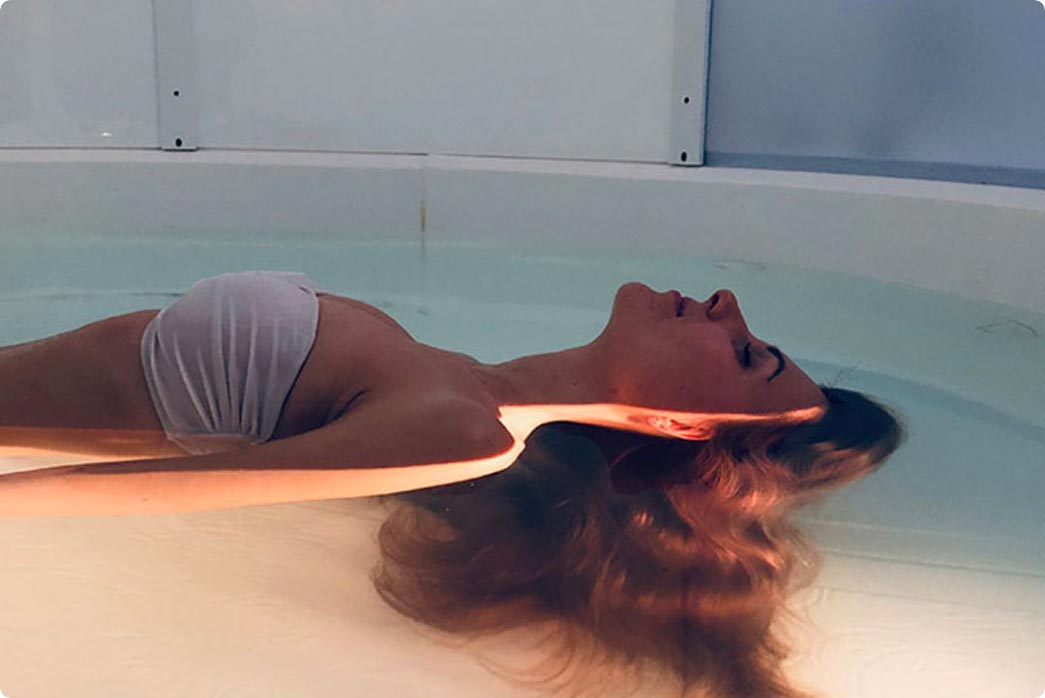Floating Meditation
Experience deep relaxation in our state-of-the-art float chambers. Designed to reduce stress and enhance mindfulness, each session provides a serene escape from daily pressures.
Explore
the Calming Benefits of Floating Chambers
Experience deep relaxation in our state-of-the-art float chambers. Designed to reduce stress and enhance mindfulness, each session provides a serene escape from daily pressures.

Discover the perfect balance of movement and stillness with our Float & Yoga Experience. Engage in restorative yoga to open and energize, then float effortlessly to release stress and rejuvenate your mind and body.


Indulge in the ultimate relaxation experience with our Float & Massage sessions. Begin with a therapeutic massage, then unwind in a float tank.
Explore
the Calming Benefits of Floating Chambers
FAQ
Can I drown in there?
Nope. Some people fall asleep but the water is so buoyant that you stay afloat. The worst that can happen is maybe getting a bit of salt water in your eyes.
What if I’ve got cuts or other open wounds?
Open wounds and scratches can be covered with waterproof plasters, or with a layer Vaseline (available on our floating chambers). The solution itself is not harmful, but it will sting, which can be uncomfortable.
Do I get dehydrated from soaking for so long?
No! Your skin doesn’t even prune up and it become silky soft afterwards!
What if I’m claustrophobic?
Being in the tanks is more like floating in outer space than being shut in a box. You’re always in control of your environment and even people with extreme claustrophobia have reported having no problems with their time in the tank.
How long have float tanks been around?
The first float tank was developed in 1954. These involved full submersion in water and a breathing device that completely covered your face. The first lay down commercial tanks were invented in the early 70’s.
What’s the longest someone has been in the tank?
One of the owners of Float On in Portland, USA, goes for a 12 hour float about once a month… famed float inventor John Lily is said to have floated for much, much longer periods of time. But we’d recommend that an hour is great for the first time floater. Double and even triple floats are an option for those on the Sage members.
Do I have to stay in the whole time?
There aren’t any latches on the tank doors and you can get out anytime. That said, the 60-minutes usually goes by faster than you would expect.
Can more than one person float in a tank at a time?
Yes. We are the only center in Oslo that has a double tank allowing for couple floating.
What are the differences in your floating meditation chambers?
Once in the soothing saltiness, the experience is practically identical in both. The difference is purely the size. Floating meditation chamber 2 (Duo) is designed for two people to allow couples to float (with two showers), and floating meditation chamber 3 (Individual) is designed for one person.
Do I need to bring anything?
If you have longer hair, you may want to bring . Also, something to put your contact lenses into while you’re in the tank. Other than that, we provide everything you need (one towel, earplugs, body wash/shampoo…) Each room is fully private and you go into the tanks nude so there’s no need to bring a bathing suit.
Can I float if I just dyed my hair?
While there is no guarantee that the salt won’t strip some color from your hair, we recommend that you check if the water running through your hair in the shower at home is fully clear. If there is still some color coming out you should wait a couple of more days/showers. We cannot let you float if you have bright hair dye as it damages our tank and contaminates solution.
Can I float if I’m menstruating?
Yes. Just follow the same protocol you would for a swimming pool. Some women do experience some discomfort in their feminine areas before or during this time.
Is there anything I should do to prepare?
Avoid caffeinated beverages for several hours beforehand to reduce the chances of having the jitters. Don’t shave or wax at least 8-12 hours since the salt water can irritate your skin. Eating a light meal about an hour to 90 minutes ahead of time stops your stomach from sounding like an angry monster while you float. Other than that there is no specific preparation needed.
Can I float if I’m pregnant?
Pregnant women love floating! There is even a special position you can float in that relieves all of the weight of the baby off of the mother’s body. If you are in your third trimester or have any concerns please consult with your physician prior to booking your appointment. The position is belly down with a pool noodle.
What is floating?
Sensory deprivation floatation therapy, also known as floatation therapy, float meditation or isolation therapy, involves laying in a specially designed tank filled with water and Epsom salt, creating a buoyant environment. The sensory deprivation float tank is soundproof and lightproof, providing a sensory-deprived experience where users can disconnect from external stimuli.
Floating is short for “Floating rest”, or as science refers to the relaxation method – * Restricted Environmental Stimulation Technique *. The method was developed in the USA in 1954, but first came to the Nordic countries in 1985, when the first center opened in Sweden. Floating is described as a shortcut to deep relaxation. Where meditation and yoga require you to learn certain techniques, here you can just lie down and flow into total relaxation. The method has been well known among athletes for many years and interest among the medical profession is growing.
When floating, the body lies in a tank with 25 cm deep salt water that maintains 34.8 degrees. Air, salt water and skin have the same temperature inside the tank. This creates a feeling of weightlessness and all the muscles in the body are allowed to relax. The brain also gets rest from the sound and light of the surroundings. Epsom salt * (magnesium sulphate) * is added to the water, calms the nervous system and makes the muscles relax. A typical treatment lasts for one hour.
Floating can be something for you who are stressed, burnt out or have trouble sleeping. It can also be beneficial if you have a headache, poor blood circulation, high blood pressure or tense muscles in the shoulders and neck after heavy physical work or exercise. Torstein Norlander, professor of psychology at the Medical University of Karlstad, is behind a study that shows that floating reduces stress-related pain and depression, among other things. It is recommended that you take time to relax a bit after the treatment to maximize the effect.
Read more about floating

GIFTCARD